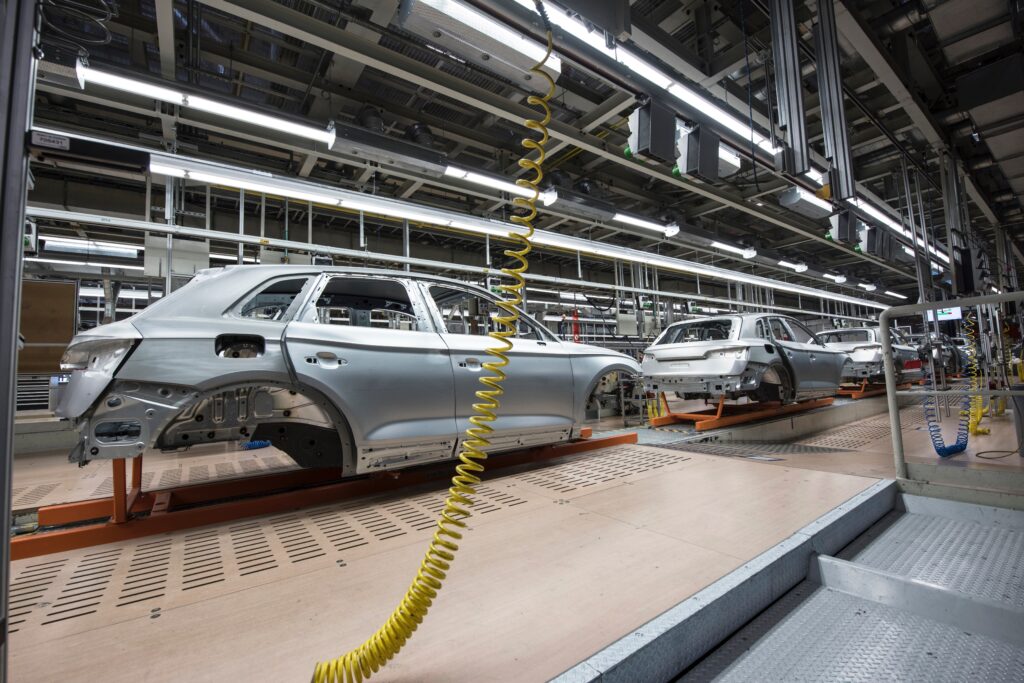The automotive industry is undergoing the largest wide-scale transformation since the adoption of the assembly line nearly 110 years ago. The shift to electrification, digitalization, and decarbonization are at the very initial stages of widespread adoption in many major markets. This transformation is driven by global pressures to reduce carbon emissions from heavy-emitting industries.
This piece regularly references a World Economic Forum report. More information and figures are available within Driving Ambitions: The Business Case for Circular Economy in the Car Industry.
To reduce their impact, car manufacturers must fundamentally change their business. It will take significant investments and innovation to address challenges in the years ahead. While the automotive industry has been successful at extending the useful life of a vehicle through a comprehensive pre-owned resale market, there is more work to be done. Circularity can help overcome these challenges and build a path to greater economic resilience, reduced carbon emissions, and improved business benefits across the automotive value chain. According to the WEF report, circularity has the potential to improve profitability by 1.5 times along the value chain and increase revenues per vehicle by 15-20 times its sales price.
Circularity in the car industry
As with most industries, the transformation from a linear economy model to a circular economy model in automotive manufacturing can provide a path to economic resiliency and reduced carbon emissions. These transformations can occur through implementing the following sustainability strategies:
1. Design for circularity
Manufacturers set design standards with every new make and model. Designing for circularity needs to become just as prevalent as designing for better fuel efficiency or passenger comfort.
Selecting sustainable components such as bio-based plastics, recycled materials, or materials that can be easily dismantled and recycled at end-of-life brings further value to every vehicle. Circular designs are heavily dependent on supplier relationships. Car manufacturers will need to adjust existing relationships and develop new supplier relationships that can deliver eco-friendly materials and reusable components, as well as low-waste packaging and logistics methods.

Electric automotive manufacturers are shaking up the consumer market through better car chassis design. This skateboard chassis is a flat platform with four wheels that, while it looks like a skateboard, holds all the electric motors and the battery pack. One of the many benefits of a skateboard platform is that manufacturers can build nearly any kind of vehicle they want on top of the platform, as the size and shape of the chassis can easily be varied to meet different requirements. Automotive News proposes that “the skateboard chassis just might be the most important piece of automotive hardware created this century.”
Implementing a modular design approach like the skateboard chassis in vehicle manufacturing allows for the standardization of components and parts. If a problem arises, car manufacturers can easily disassemble the vehicle and replace the affected parts, avoiding a total loss. Designing for disassembly includes easy access to bolts, screws, and clips, as well as minimizing adhesives or other non-reusable fastening methods. Currently, 86% of ELVs can be recycled, with 85% used to create new metal.
According to Knauf Industries, implementing energy efficiency during production is not enough to effectively reduce CO2 emissions to meet industry targets. It is also important to ensure that cars consume as little energy as possible in the course of their life cycle – therefore a sustainable design is required. When factoring in future life cycles, the engine type, weight of the vehicle, durability, versatility, and appropriate design strategies for foamed polypropylene (EPP) and polystyrene (EPS) are particularly worth mentioning.
2. Focus on remanufacturing
Remanufacturing is the process of restoring a used product to like-new condition, which can reduce waste and extend the life of a vehicle. This process includes reusing parts, engines, and other components, therefore limiting new production and associated energy consumption. Remanufacturing already exists in the automotive industry, but can be widely expanded upon with further considerations.
Beyond designing for remanufacturing at end-of-life, car manufacturers must create detailed documentation on the design, parts, and components of vehicles. This documentation will allow remanufacturers to easily identify and source parts. In addition, automotive manufacturers can advance remanufacturing efforts by providing certification and training programs like this one from Manufactured Again. These programs benefit both manufacturers and vehicle owners by making repairs more cost effective and longer-lasting.
3. Grow the sharing economy
Another way that manufacturers can increase the value of vehicles is by investing in the sharing economy. The sharing economy, including car-sharing and ride-sharing services, can help reduce the number of vehicles on the road and lower the environmental impact of the industry. This can also extend the life of vehicles by reducing the need for new production.
A few models are already starting to come to life. Ride-sharing services like Uber and Lyft have replaced taxi fleets in many major cities globally. Car manufacturers like Volkswagen are developing subscription services for their cars. A subscription service provides an additional revenue stream for manufacturers while providing consumers with a lower price point and easier access to vehicles.
Circularity enables automotive companies to overcome growth limitations and create more value across the vehicle life cycle.
Circular Cars Initiative
By implementing these strategies, not only could the automobile industry move towards a more sustainable future but reducing waste and conserving resources, more innovative design in product would make circularity possible by allowing easier disassembly, remanufacturing and resale.
